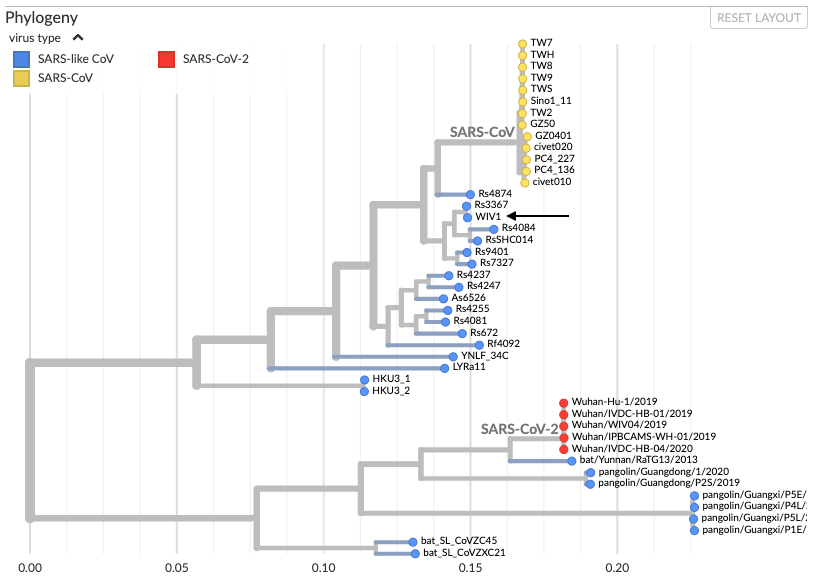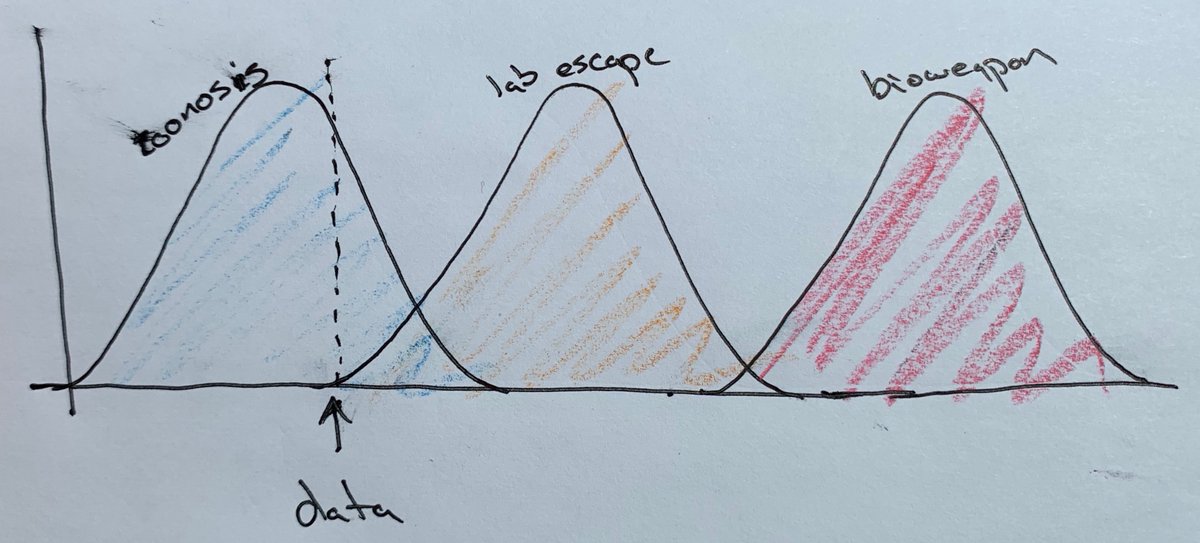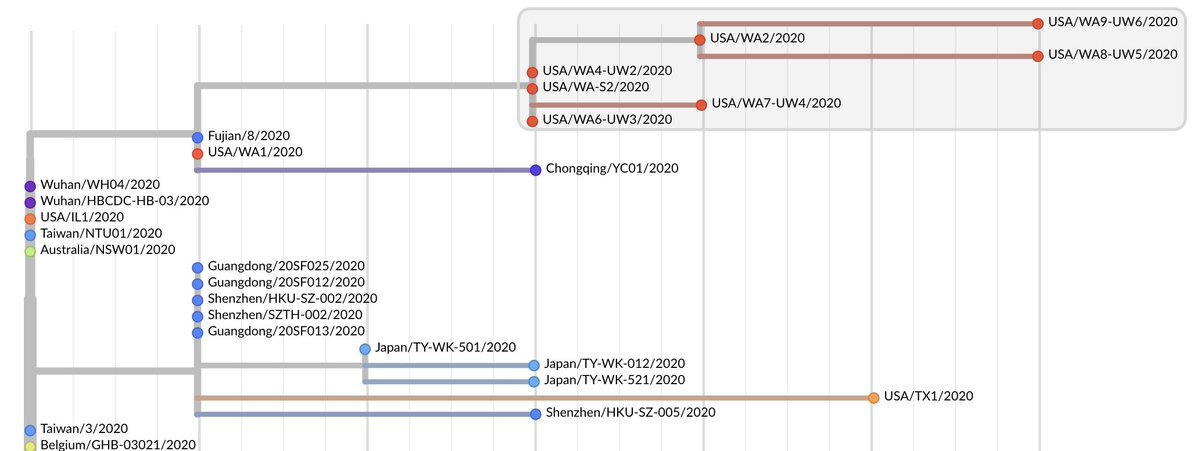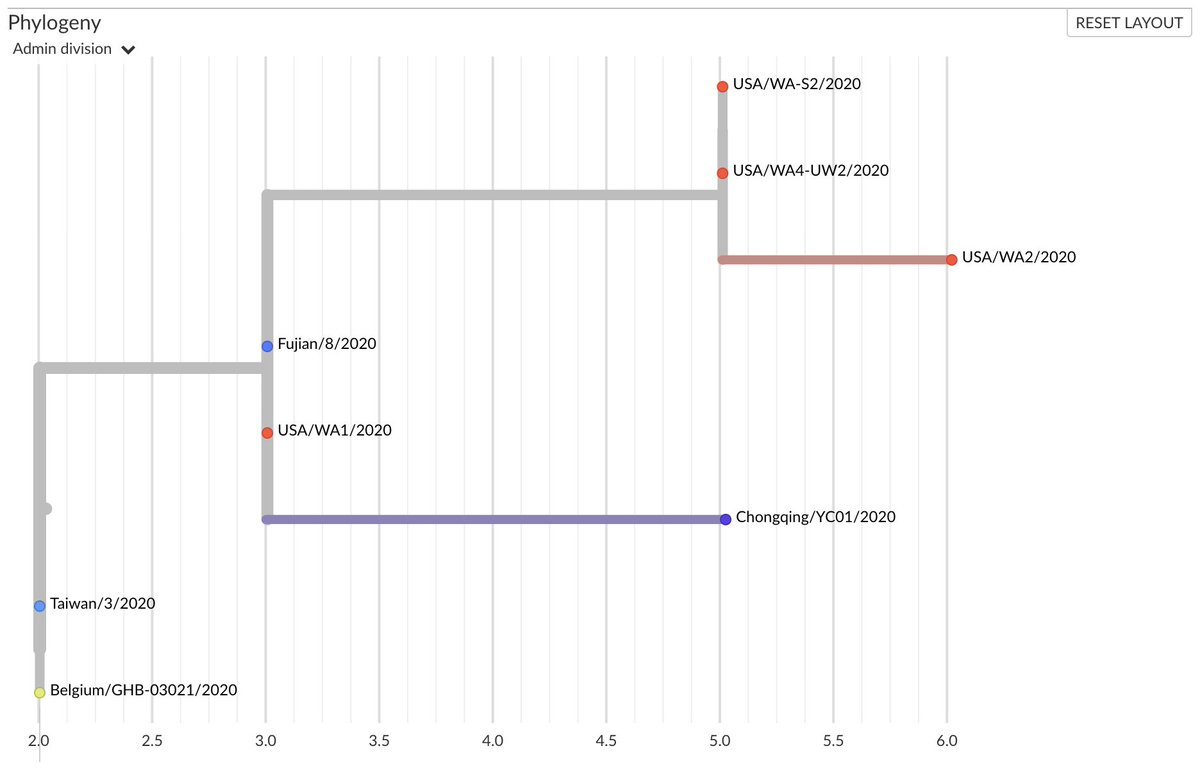washingtonpost.com/politics/2020/…
#SARSCoV2 is an outgrowth of circulating diversity of SARS-like viruses in bats. A zoonosis is expected to be a random draw from this diversity. A lab escape is highly likely to be a common lab strain, either exactly 2002 SARS or WIV1. 5/21

- Zoonosis: consistent
- Lab escape: unlikely
8/21
This point is rather technical, please see preprint by @K_G_Andersen, @arambaut, et al at virological.org/t/the-proximal… for full details. 9/21
- Zoonosis: consistent
- Lab escape: unlikely
12/21
Many early infections in Wuhan were associated with the Huanan Seafood Market. A zoonosis fits with the presence of early cases in a large animal market selling diverse mammals. A lab escape is difficult to square with early market cases. 13/21
- Zoonosis: consistent
- Lab escape: unlikely
14/21
33 out of 585 environmental samples taken from the Huanan seafood market showed as #SARSCoV2 positive. 31 of these were collected from the western zone of the market, where wildlife booths are concentrated. 15/21
xinhuanet.com/english/2020-0…
- Zoonosis: consistent
- Lab escape: unlikely
17/21
This is the only thing that has anything going for it for lab escape. But keep in mind, that there are other labs in China (if this had originated in Beijing, people would be accusing China CDC instead of the Wuhan Institute of Virology). 18/21
- Zoonosis: less likely
- Lab escape: consistent
20/21













